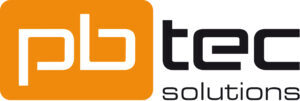We all know "Bonding" as an umbrella term for various processes in packaging technology. The best-known examples are wire bonding, chip bonding, wafer bonding or anodic bonding.
Thermal bonding, on the other hand, is less well known as a generic term for processes such as
- Hot Bar Soldering or
- ACF Bonding (ACF=Anisotropic Conductive Film)
Yet it is increasingly being used in a wide variety of applications to connect electrical components, such as FPCs (Flexible PCBs), displays and PCBAs as an alternative to conventional electromechanical connector technology or classic soldering methods.

For example, individual functional units of modern driver assistance systems, such as blind spot assistants installed in the exterior mirrors, complex sensors, cameras or displays and control units, are often electrically connected using the thermal bonding process. So-called FPCs (Flexible Printed Circuits) or FFCs (Flat Flexible Cables) are often used as connecting elements.
ACF bonding has various advantages over conventional connection techniques:
- Reliable connections even in the fine pitch range <30µm
- More shock-resistant, as more elastic electromechanical connections
- Possibility of making an electromechanical connection even with non-solderable alloys
- Lead-free process, without flux or other environmentally harmful residues
